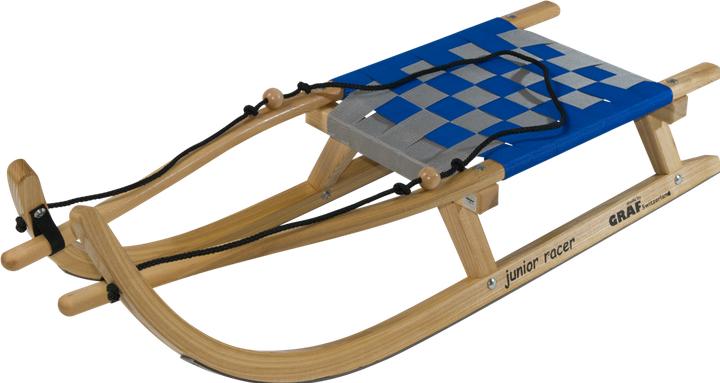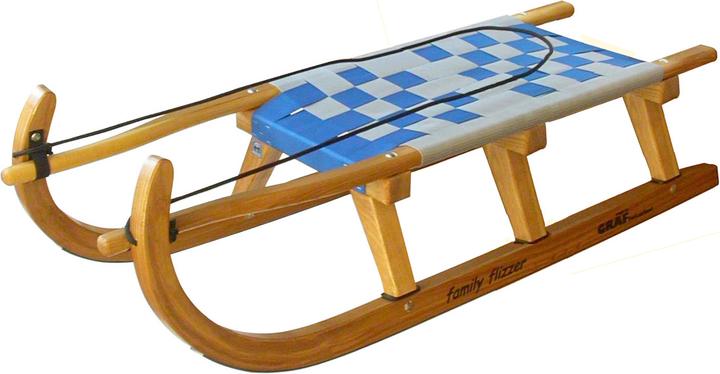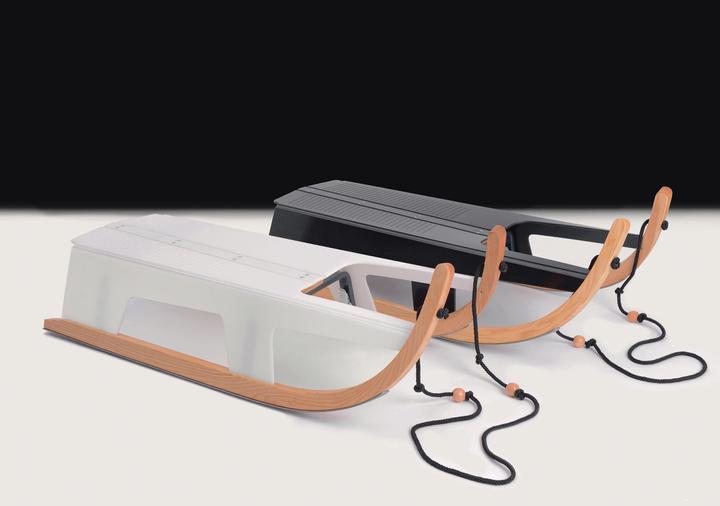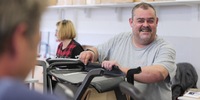
Building sledges at 3R: when wood takes on beautiful curves
Ash wood, water vapour and craftsmanship. In the video above, you can see how these three ingredients come together to make the sledges and Rodels from Sulgen (TG). Take a tour of a company with a long tradition.
Hot steam escapes from the pipe in which the wood has been softened. Now we have to hurry up: we take out the piece of wood, clamp it, apply two or three hammer blows with good aim, check that everything is in place, pull a lever and the machine engages and slowly but surely bends the wood into its new shape. Like many others before it over the last few decades in Sulgen (TG), this piece of wood, which until a year ago belonged to a local ash tree, now has the ideal curves to become a sledge runner. 3R AG is continuing a long tradition. The workshop at Kirchstrasse 1 has been making sledges since the 1930s.
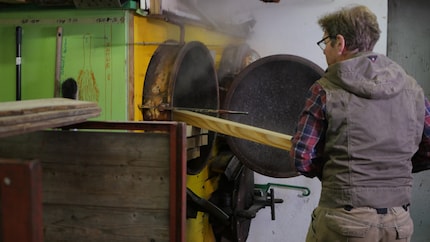
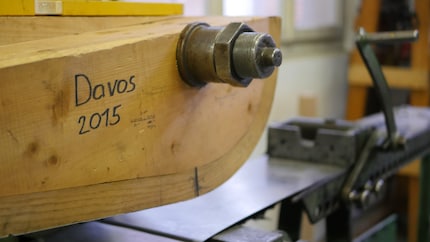
"The steam generator is the same as it was in the old days," says Erwin Dreier, who took over the reins of the company in 2002. The master carpenter and master wheelwright by training and his employees make, among other things, the brand's great classic: the original Davos sled. "We want our sleds to be just like the ones our great-grandparents used to buy," he says. The wood comes from local forests, the slats have been carefully grooved and great care has been taken with every detail. "We really want to preserve this quality."

A cultural heritage on skates
An original Davos sled made in Switzerland: a unique object for many customers. A product that stirs emotions and revives memories. The first toboggan runs down small hills, heart racing. The painful jumps on springboards you made yourself. Going down with your children. Grandchildren squealing with delight. All generations are familiar with this cultural heritage on skates. But we're surprised that this classic still accounts for around half of 3R AG's sled production. After all, it's an extremely durable product. "In the case of the great slide enthusiasts, the grandchildren may end up wearing out the sled their grandfather used as a child," says Dreier.
.
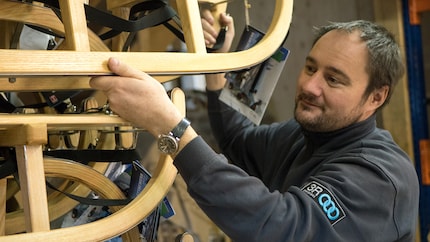
While they like to reminisce, other guests prefer to opt for a modern, sporty sled with a comfortable fabric seat. On the piste, the Davos sled looks pretty old next to the "Flizzer" or the "Swiss Racer."
Between tradition and innovation
However, it's not just a question of following the zeitgeist; you have to challenge it. No company can rely on tradition alone. That's why innovation complements age-old techniques. But tradition is an advantage, especially when, as in Sulgen, you can see the craftsmanship for yourself. "When I walk around the workshop with customers, I often sell a sled before we even get to the back of the workshop, where the finished products are," adds Erwin Dreier. "We then only discuss the choice of model."
The sweet scent of ash oil wafts through the joinery. The floor covered in a thin layer of sawdust creaks in a warm atmosphere. Piles of bent wood and straight battens wait to be, step by step, transformed into sledges by the employees. Surrounded by the hum of saws and drills, you feel a deep respect for the work that goes into these products.
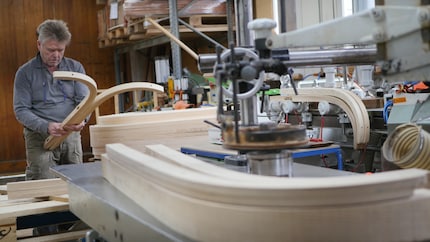
No carbon, no crocodile leather
"Our sleds are products that we choose conscientiously," Dreier continues. What's more, many people are increasingly questioning the origin of products. "But we don't want to make exclusive products. Carbon and crocodile leather are not for us". Pragmatism does not mean remaining closed to novelty. In Sulgen, for example, we produce the "Folding Sled", a folding model created by two young London designers. "The sled market attracts a lot of designers," explains Dreier, who receives requests of this kind all the time.
Despite tradition, he has to remain forward-looking. In his case, that means making long-term forecasts while remaining flexible. All the parts are in stock until the end of August. They have been sawn, bent, dried and prepared. As a rule, however, the sleds are only assembled once they have been sold. This saves storage space and allows us to respond to special requests, such as adding inscriptions to the sleds or equipping the seats with particular colour combinations. Orders are rare when there's no snow. But when the hills are covered in white, customers want their sleds as soon as possible. "So we have to be able to react within a few hours," explains Mr Dreier. "If everyone gives it their all, we can make 100 sleds a day."Despite the odds, despite climate change and despite plastic sledges, this entrepreneur is convinced: "As long as people are sledging, there will be wooden sledges."
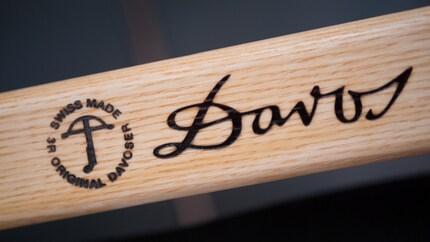
This article first appeared on 5.1.2019.
Simple writer and dad of two who likes to be on the move, wading through everyday family life. Juggling several balls, I'll occasionally drop one. It could be a ball, or a remark. Or both.
Interesting facts about products, behind-the-scenes looks at manufacturers and deep-dives on interesting people.
Show all